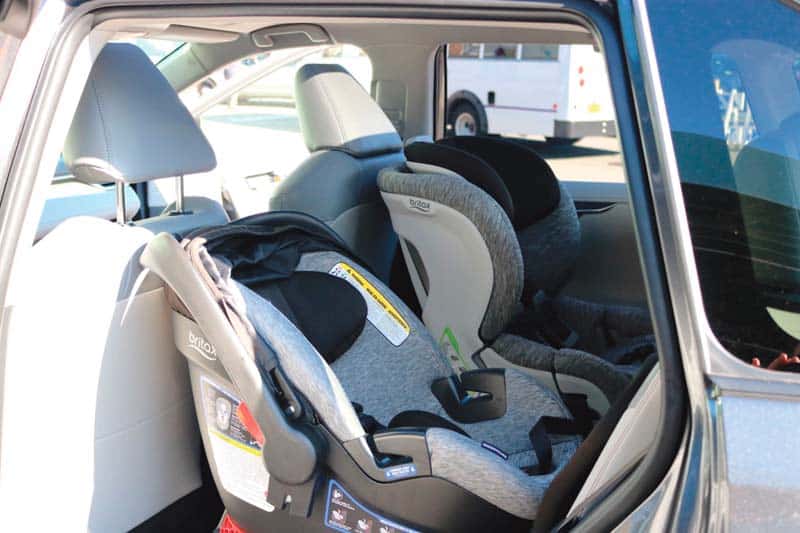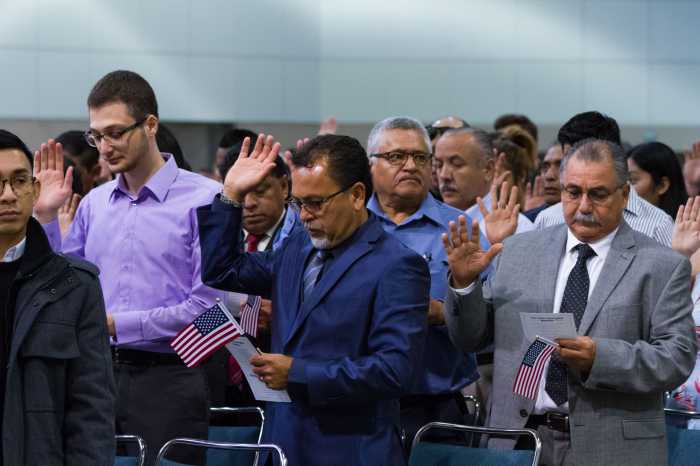State now requires life-saving rear-facing seats up to age 2

A new law went into effect at the start of November that requires drivers to keep infants and young toddlers in rear-facing child safety seats until they are at least two years old or reach the maximum height and weight for the seat being used. The new law seeks to better protect vulnerable babies and toddlers, who often have disproportionately large and heavy heads and are at risk of serious neck, head and spinal injuries when thrown forward in forward-facing car seats. More than 4,000 youngsters, ages four and under, were injured or killed in car crashes in New York State from 2017-18. NYU Winthrop Hospital, which sees many pediatric emergency room visits due to vehicle collisions, is heralding this safety improvement that was championed in the State Legislature by AAA Northeast. AAA was at NYU Winthrop today to explain the new law, with an AAA technician also demonstrating proper installation of rear-facing car seats.
“Prior to their teens, children have a spine strength that is only about 25 percent of that of an adult,” D’Andrea Joseph, chief of the division of trauma and acute care surgery at NYU Winthrop Hospital, said. “Compounding that weakness is the rapid back-and-forth head movement that can occur in a car crash. It’s well-established that car seats save the lives of children and, in particular, that rear-facing car seats help decrease the rapid back-and-forth motion of the infant head, which otherwise could result in significant and permanent injuries. With this new law, NYU Winthrop hopes it will be treating considerably fewer children with these serious injuries.”

“AAA has been a long-time advocate for this improvement to the safety of our youngsters in vehicles,” Robert Sinclair Jr., manager of media relations for AAA Northeast, said.
Sinclair noted that many states already have similar rear-facing car seat safety laws in place, including neighboring New Jersey and Connecticut. Children in cars that are driving to or through those states must have rear-facing seats. Additional states with the law include Pennsylvania, Rhode Island, South Carolina, California, Oklahoma and Oregon.
The new law now in place is in line with updated recommendations from the American Academy of Pediatrics. A rear-facing seat provides increased support for the still-developing head, neck and spine, and while parents may worry that some children have their legs touching the vehicle’s back seat, the number of rear-facing leg injuries is negligible compared with more serious head, neck or spine injuries.
Parents in New York can arrange for a child safety seat technician to inspect their seat installation by visiting www.safeny.ny.gov/seat-per.htm.
—Submitted by AAA Northeast


































